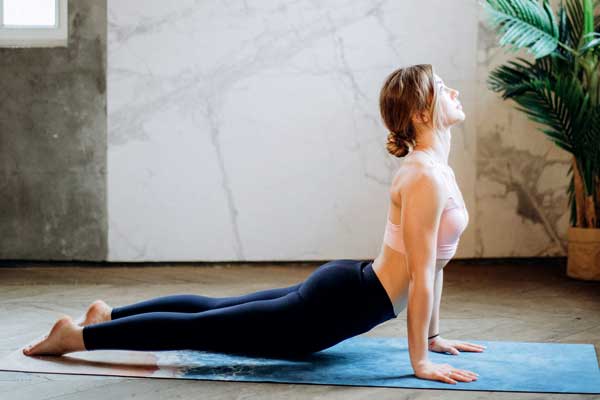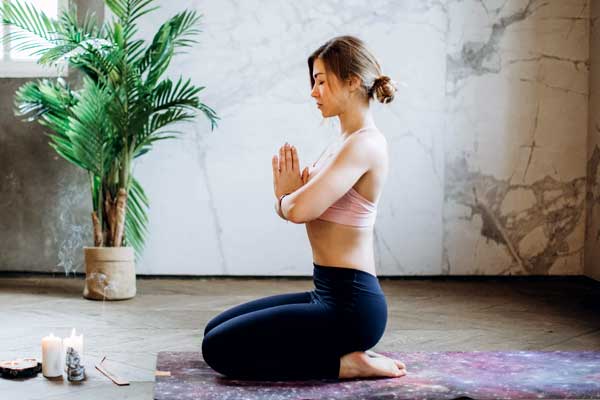As someone who has been practicing yoga for years, I can attest that there are many different styles and variations of yoga.
One style that has grown in popularity in recent years is slow flow yoga. But what exactly is slow flow yoga, and how does it differ from other styles of yoga?
In this ultimate guide, I will answer all your questions and provide you with everything you need about slow flow yoga.
What Is Slow Flow Yoga?
Slow flow yoga is a gentle, meditative style focusing on moving slowly and mindfully through various poses.
It’s a great style of yoga for beginners and more experienced practitioners who want to slow down and focus on their breath and movement.
Slow flow yoga classes typically start with a few minutes of meditation and pranayama (breathing exercises), followed by a sequence of poses held for several breaths each.
The sequence is designed to build heat and strength in the body, promoting relaxation and a sense of calm.
The Benefits of Slow Flow Yoga
One of the primary benefits of slow flow yoga is that it can help to reduce stress and anxiety.
By moving slowly and mindfully through the poses, you can focus on your breath and bring your attention to the present moment.
This can be incredibly grounding and calming, especially if you feel overwhelmed or stressed.
Slow flow yoga can also help to improve flexibility, strength, and balance, as well as to increase mindfulness and body awareness.
How Slow Flow Yoga Differs from Other Yoga Styles
While slow flow yoga shares many similarities with other yoga styles, such as hatha yoga or vinyasa, there are a few key differences. One of the main differences is the pace of the practice.
Slow flow yoga is, as the name suggests, slower than other styles of yoga. Poses are held for more extended periods, with greater emphasis on breath and mindfulness.
Additionally, slow flow yoga is often less physically challenging than other styles of yoga, making it an excellent option for beginners or those recovering from an injury or illness.
Basic Poses for Slow Flow Yoga
Some of the basic poses that you can expect to practice in a slow flow yoga class include:
- Mountain pose (Tadasana)
- Forward fold (Uttanasana)
- Downward-facing dog (Adho Mukha Svanasana)
- Warrior I (Virabhadrasana I)
- Warrior II (Virabhadrasana II)
- Tree pose (Vrksasana)
- Bridge pose (Setu Bandha Sarvangasana)
- Child’s pose (Balasana)
These poses are great for building strength, flexibility, and balance while promoting relaxation and stress relief.
The Importance of Breath in Slow Flow Yoga
Breath is essential to any yoga practice but crucial in slow flow yoga. In slow flow yoga, the breath is used to help calm the mind, focus attention, and create a sense of ease in the body.
Each pose is linked to an inhale or exhale; the breath guides the body’s movement.
By paying attention to the breath, you can also become more aware of any areas of tension or discomfort in the body and work to release those areas with each exhale.
Creating a Slow Flow Yoga Routine
If you want to create a slow flow yoga routine to practice at home, there are a few things to keep in mind.
First, start with a few minutes of meditation and pranayama to help calm the mind and focus attention.
Then, move into a smooth pose sequence that lets you move slowly and mindfully.
You can use the basic poses listed above or add some additional poses you enjoy.
Remember to focus on your breath throughout the practice and to move slowly and with intention.

Tips for Practicing Slow Flow Yoga at Home
If you’re new to slow flow yoga or yoga, following along with a video or taking a few classes with a teacher before practicing on your own can be helpful.
When practicing at home, create a quiet, calming space where you can practice without distractions.
Use props, such as blankets or blocks, to help support your body in the poses, and listen to your body to avoid any pain or discomfort.
The Best Slow Flow Yoga Instructors to Follow Online
If you’re looking for some inspiration for your slow flow yoga practice, there are plenty of great instructors to follow online. Some of my favorites include:
- Adriene Mishler of Yoga with Adriene
- Kassandra Reinhardt of Yoga with Kassandra
- Brett Larkin of Brett Larkin Yoga
Each instructor offers a unique perspective on slow flow yoga and has plenty of videos and resources to help you deepen your practice.
Slow Flow Yoga Retreats and Workshops
Consider attending a retreat or workshop to immerse yourself in slow flow yoga.
These immersive experiences offer the chance to deepen your practice, connect with other like-minded individuals, and take a break from the stresses of daily life. Some great slow flow yoga retreats and workshops include:
- The Slow Living Retreat in Bali, Indonesia
- The Slow Flow Yoga Retreat in Tulum, Mexico
- The Mindful Slow Flow Yoga Weekend in the UK
Conclusion: Finding Your Zen in Slow Motion
Slow flow yoga is a beautiful style that uniquely blends physical challenge, relaxation, and mindfulness.
Moving slowly and mindfully through a sequence of poses can reduce stress, improve flexibility and strength, and cultivate a sense of relaxation and calm in the body and mind.
Whether you’re an experienced practitioner or a beginner, slow flow yoga is an excellent style of yoga to explore. So why not try it and see how it can benefit your mind, body, and soul?
